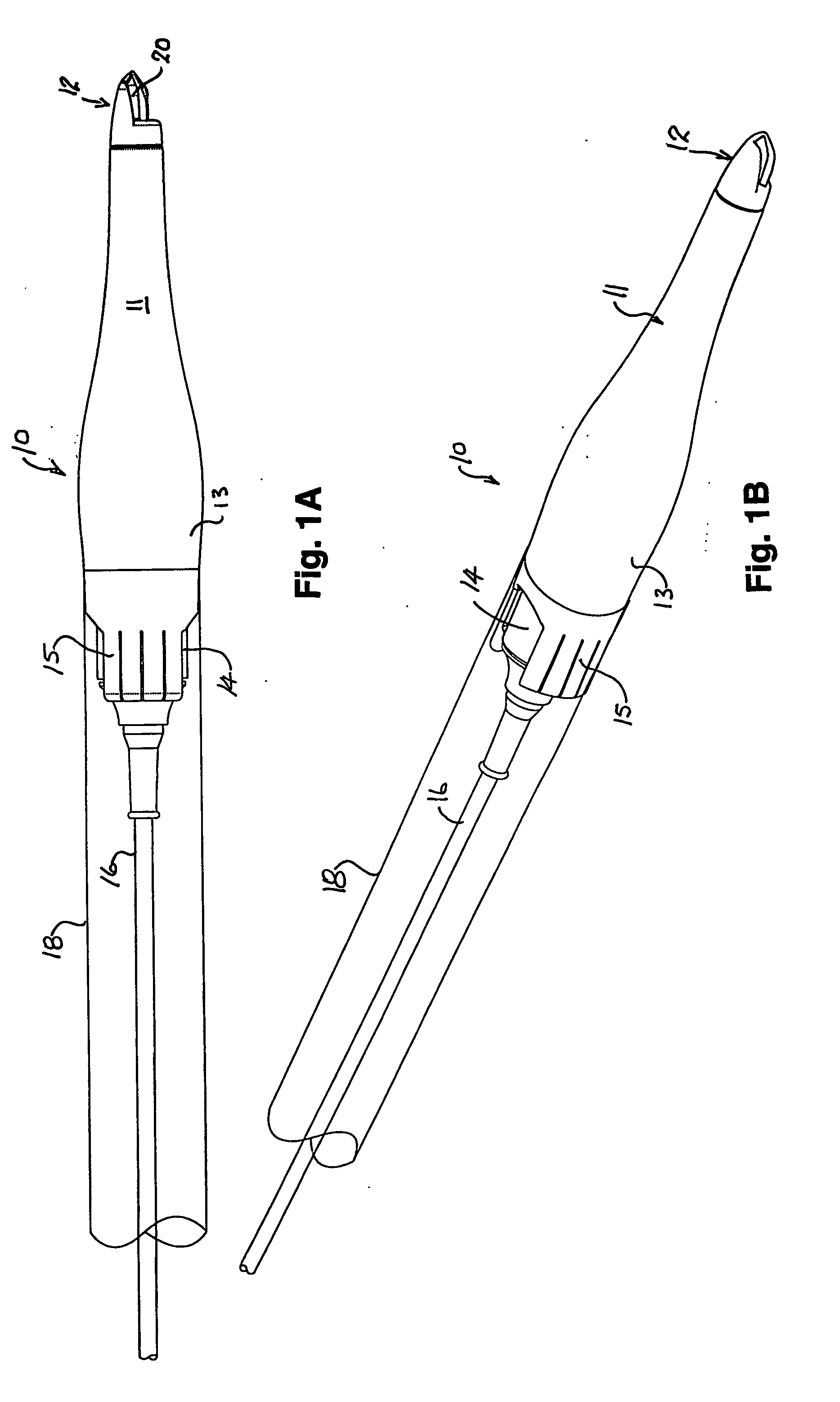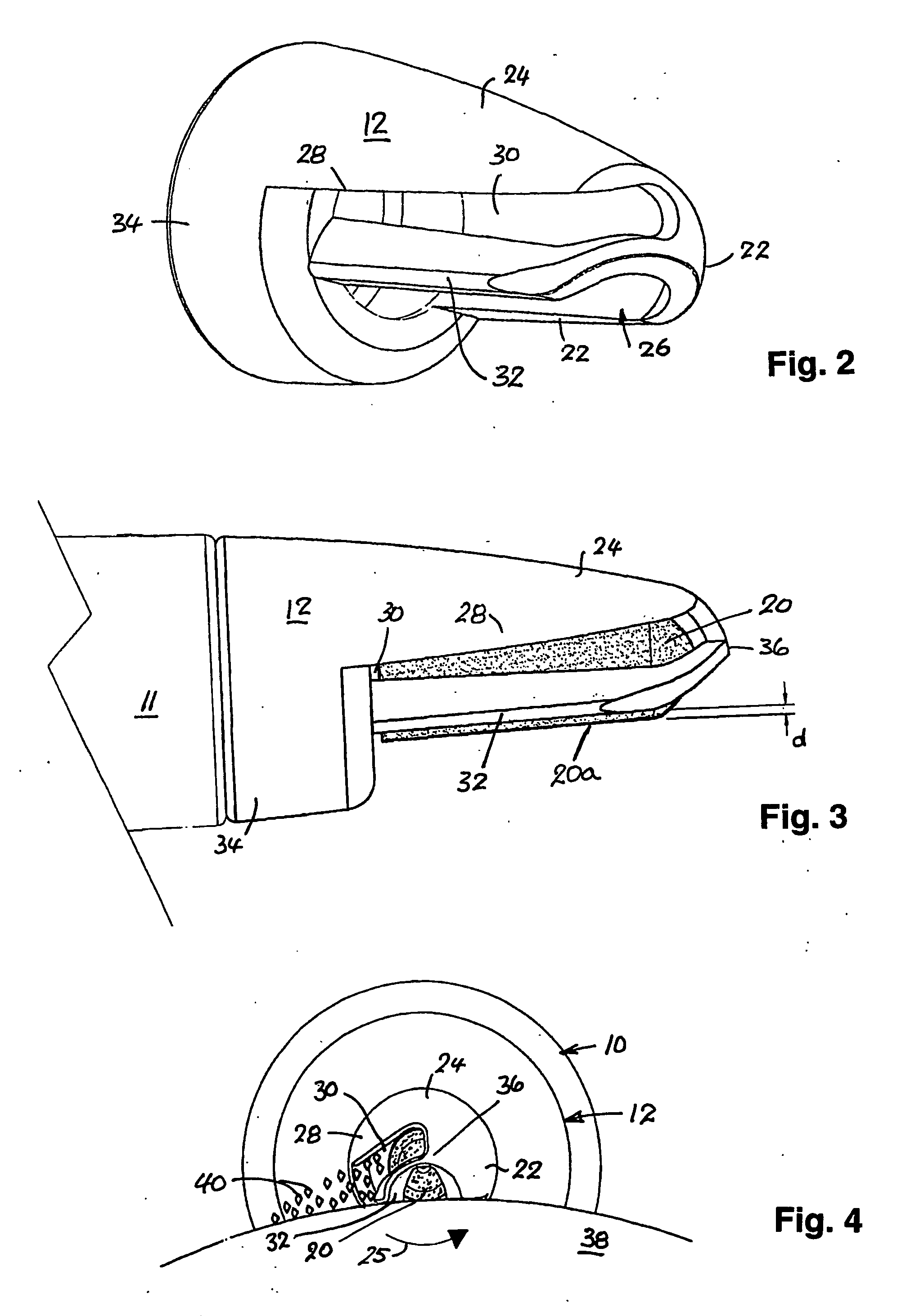Method and apparatus for treating skin
- Summary
- Abstract
- Description
- Claims
- Application Information
AI Technical Summary
Benefits of technology
Problems solved by technology
Method used
Image
Examples
Example
[0032]FIGS. 1A and 1B are two views of the device 10 of the first example, which comprises a driver assembly or hand-piece 11 fitted with a disposable shield 12 on its distal end, driver assembly 11 having a hollow tubular body 13 into the proximal end of which a high-speed low-voltage motor 14 and shaft (not shown) are inserted and held by clips 15, the power lead for motor 14 being shown at 16. In this example, a thin transparent tubular sheath 18 is fitted over clips 15 and the proximal end of driver assembly 11 to keep motor 14 and near portion of lead 16 clean. A burr 20, just visible in FIG. 1A, is fitted on to the end of the motor shaft (not shown) and is largely covered by shield 12.
[0033] We have found molded tubular abrasive paper or fabric burrs having a relatively coarse grit size—between 120 and 350—a diameter of a few millimeters and rotated at about 10,000 rpm are suitable. Abrasive elements of this nature are commercially available are formed from paper or fabric ba...
PUM
 Login to View More
Login to View More Abstract
Description
Claims
Application Information
 Login to View More
Login to View More - R&D
- Intellectual Property
- Life Sciences
- Materials
- Tech Scout
- Unparalleled Data Quality
- Higher Quality Content
- 60% Fewer Hallucinations
Browse by: Latest US Patents, China's latest patents, Technical Efficacy Thesaurus, Application Domain, Technology Topic, Popular Technical Reports.
© 2025 PatSnap. All rights reserved.Legal|Privacy policy|Modern Slavery Act Transparency Statement|Sitemap|About US| Contact US: help@patsnap.com



